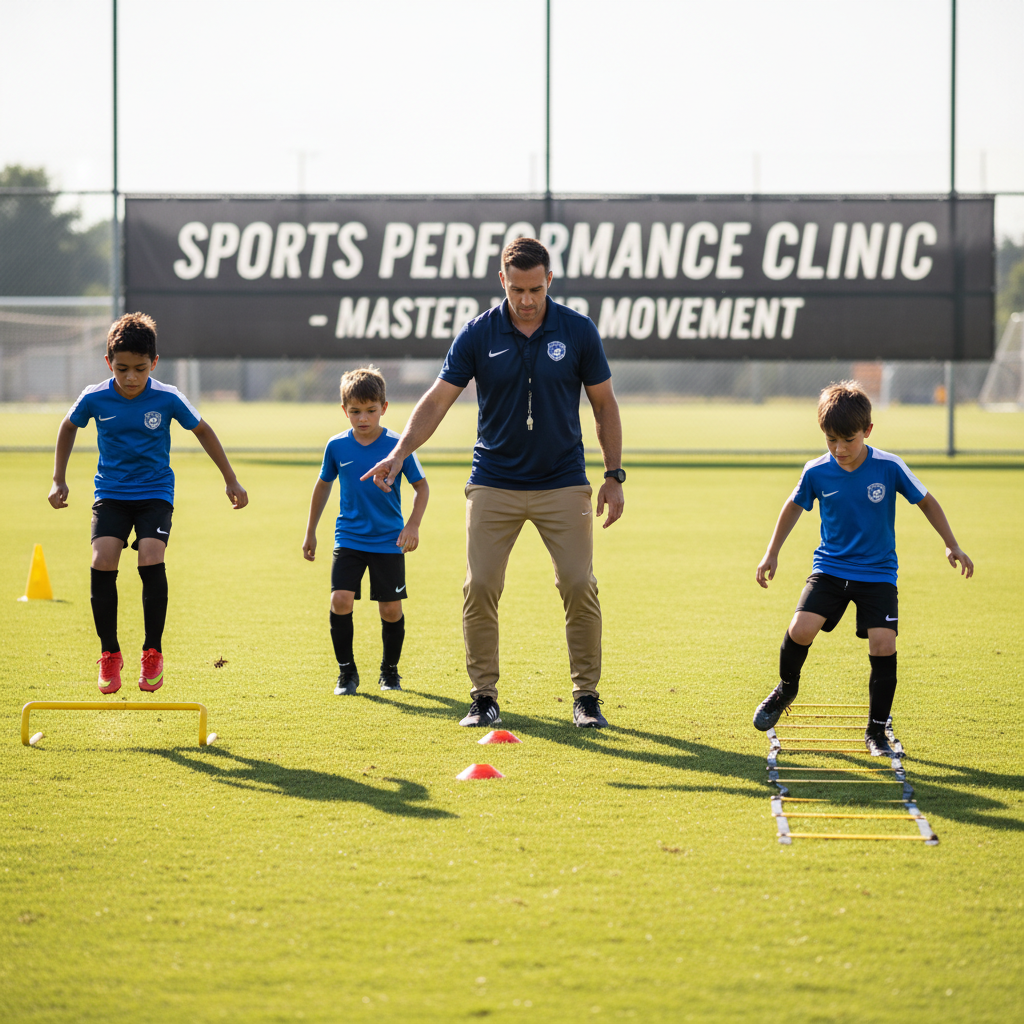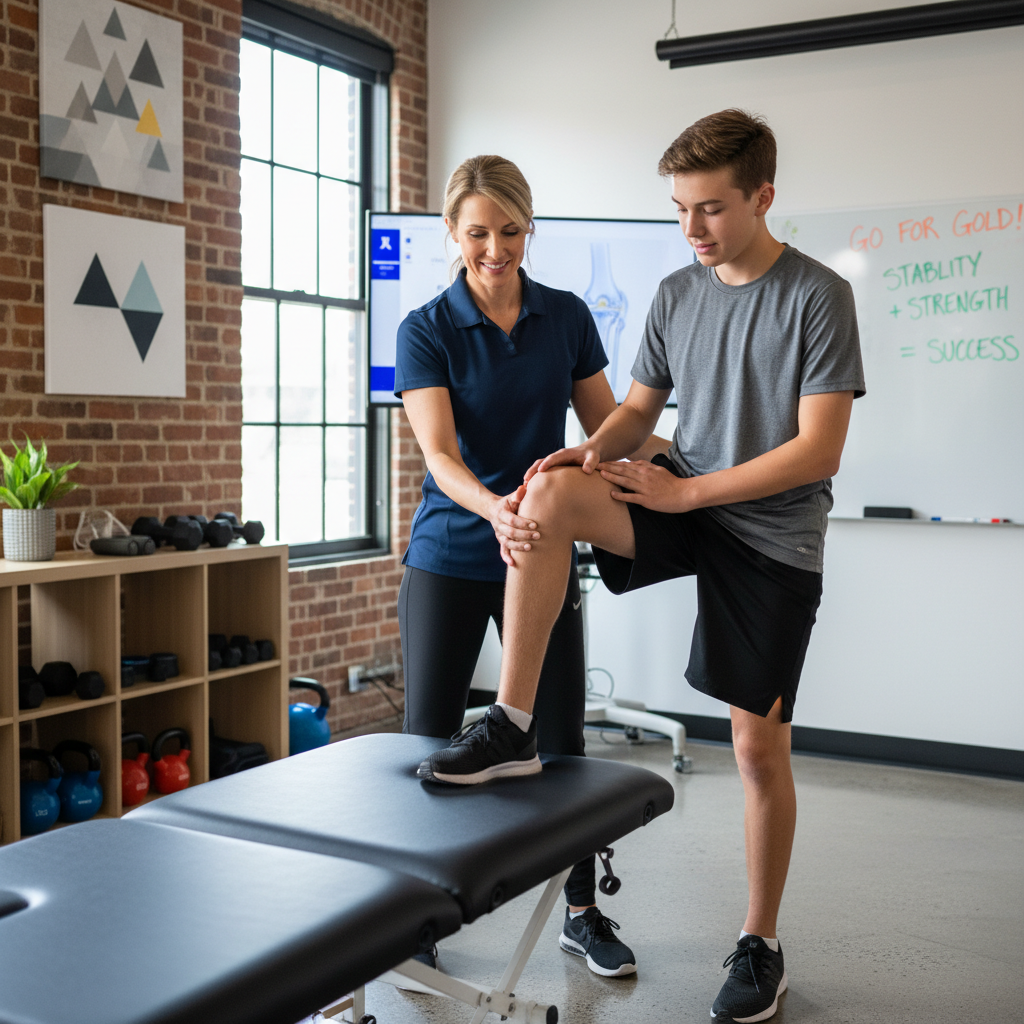Watching your child compete on the soccer field brings incredible excitement—the quick passes, powerful shots, and seamless teamwork. However, many parents share a growing concern about serious injuries, particularly ACL tears. An ACL injury can end a season and sometimes alter a young athlete's career trajectory.
Understanding these risks empowers you to take proactive steps toward prevention. It's about equipping your child with the strength, movement skills, and awareness needed to stay safe while playing the sport they love.
What Makes Young Athletes Vulnerable to ACL Injuries
The Anterior Cruciate Ligament (ACL) is a crucial structure deep inside the knee joint. Its primary function is providing stability by preventing the shin bone from sliding too far forward on the thigh bone and controlling excessive knee rotation. When this ligament tears, the knee becomes unstable and may feel like it's "giving out."
Young athletes face unique vulnerabilities to ACL injuries for several key reasons:
- Growth spurts cause bones to lengthen faster than muscles and tendons, creating temporary imbalances and decreased coordination
- Underdeveloped movement patterns mean many young athletes lack optimal neuromuscular control—the brain-to-muscle communication essential for safe, efficient movement
- Anatomical and hormonal factors place female athletes at significantly higher risk due to wider pelvic structure affecting knee alignment and hormonal fluctuations increasing ligament laxity
 Common Causes of Soccer ACL Injuries
Common Causes of Soccer ACL Injuries
Contrary to popular belief, most ACL tears in soccer are non-contact injuries occurring during routine soccer movements when the body isn't prepared to handle the forces involved.
High-risk movements include:
- Suddenly stopping or decelerating
- Rapidly changing direction during cutting maneuvers
- Pivoting or twisting with a foot planted firmly on the ground
- Landing awkwardly from jumps, particularly when heading the ball
These movements become dangerous when underlying issues exist. Muscle imbalances, especially weak hamstrings and glutes, poor core stability, and fatigue dramatically increase injury risk. When athletes tire late in games, their form deteriorates, and their bodies revert to less stable movement patterns that place the ACL in vulnerable positions.
Recognizing ACL Injury Warning Signs
If an injury occurs, recognizing potential ACL tear symptoms prevents further damage. Ignoring serious knee injuries can lead to meniscus tears, cartilage damage, and long-term instability.
Watch for these immediate symptoms:
- A distinct "pop" sound or sensation in the knee
- Immediate pain and significant swelling within hours
- Feeling of instability, as if the knee is buckling or giving way
- Difficulty bearing weight or moving the knee through full range of motion
If you notice any of these signs, your child should stop playing immediately. Don't wait or guess—prompt, accurate diagnosis from qualified healthcare professionals is essential for proper treatment planning and safe recovery.
When to Seek Professional Help
Seek immediate medical attention if your child experiences any combination of the symptoms above. Early intervention significantly impacts recovery outcomes and prevents secondary injuries that can occur with an unstable knee.

Proactive ACL Injury Prevention Strategies
The encouraging news is that most non-contact ACL injuries are preventable. Success requires a proactive approach focusing on building stronger, more coordinated, and resilient athletes.
Essential components of effective injury prevention include:
- Targeted strength training that prioritizes knee-protective muscles including hamstrings, glutes, and hip stabilizers
- Proper movement mechanics teaching athletes how to land softly from jumps, absorbing force through hips and knees
- Core stability development providing the foundation for all athletic movement and reducing knee joint stress
- Plyometric and agility training improving power, coordination, and reactive abilities
- Balanced training programs ensuring adequate rest, recovery, and nutrition to handle sport demands
Building Resilient Young Athletes
Effective prevention programs focus on neuromuscular training that rewires faulty movement patterns. This approach teaches the body to automatically use safer, more efficient movement strategies during high-stress situations on the field.
Professional Support for Prevention and Performance
Protecting your young athlete requires knowledgeable partnership. Specialized sports physical therapy can identify and correct movement patterns and strength deficits that put young soccer players at risk.
Comprehensive athletic assessments pinpoint individual risk factors before they become problems. Based on these evaluations, customized programs include:
- Targeted strength and conditioning protocols
- Neuromuscular training to improve movement patterns
- Sport-specific agility and reaction drills
- Education on proper warm-up and recovery techniques
The goal extends beyond injury prevention—it's about developing stronger, faster, and more confident players who can perform at their peak while staying healthy.
Taking Action for Your Young Athlete
Don't wait for an injury to impact your child's soccer journey. Proactive injury prevention protects their health and athletic future while enhancing their performance on the field.
Consider scheduling an athletic assessment to identify potential risk factors and develop a customized prevention program. This investment in your child's athletic development can make the difference between a season-ending injury and years of healthy, successful soccer participation.




Comments